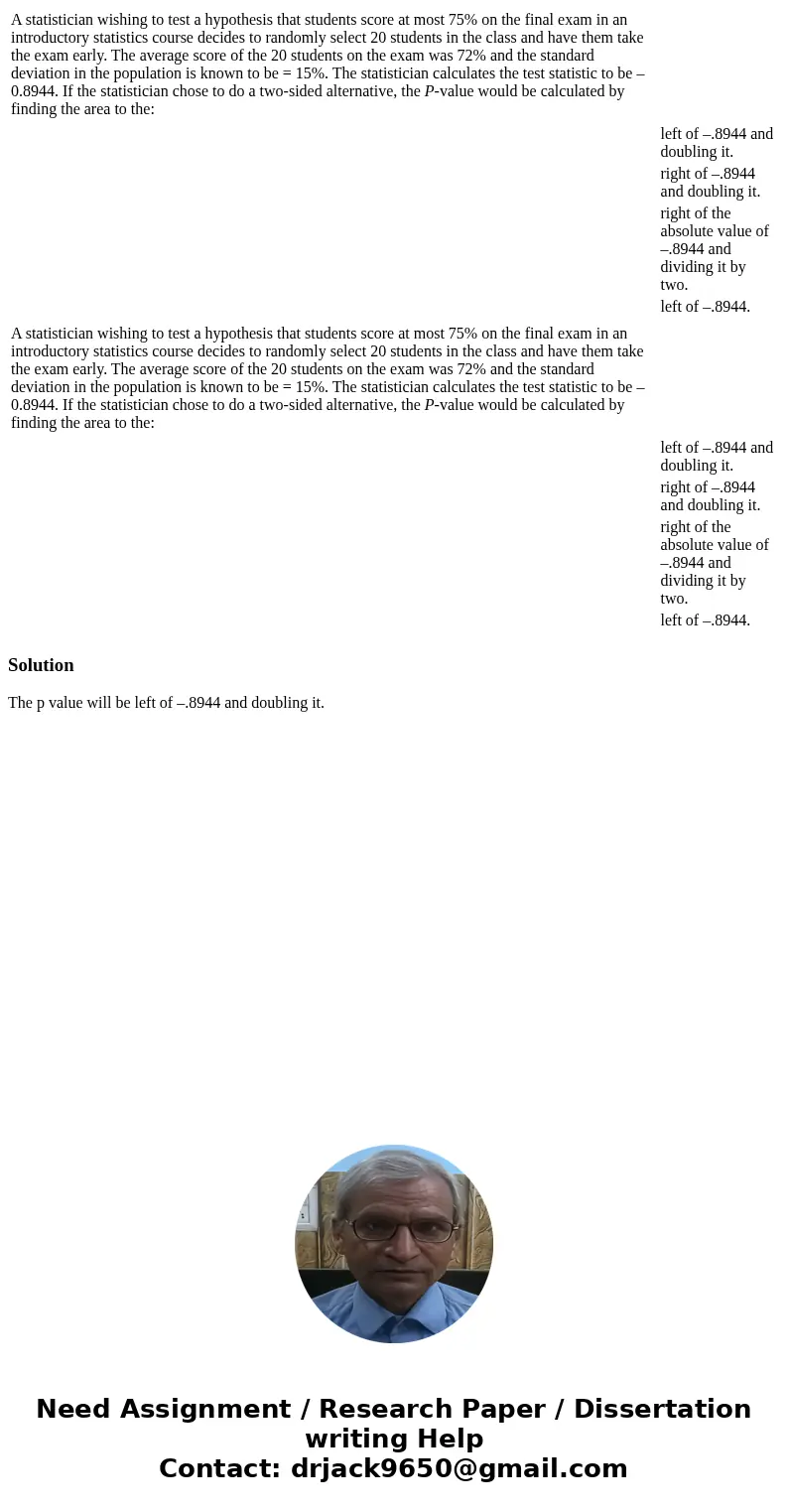| A statistician wishing to test a hypothesis that students score at most 75% on the final exam in an introductory statistics course decides to randomly select 20 students in the class and have them take the exam early. The average score of the 20 students on the exam was 72% and the standard deviation in the population is known to be = 15%. The statistician calculates the test statistic to be –0.8944. If the statistician chose to do a two-sided alternative, the P-value would be calculated by finding the area to the: |
| | left of –.8944 and doubling it. | | right of –.8944 and doubling it. | | right of the absolute value of –.8944 and dividing it by two. | | left of –.8944. | |
| A statistician wishing to test a hypothesis that students score at most 75% on the final exam in an introductory statistics course decides to randomly select 20 students in the class and have them take the exam early. The average score of the 20 students on the exam was 72% and the standard deviation in the population is known to be = 15%. The statistician calculates the test statistic to be –0.8944. If the statistician chose to do a two-sided alternative, the P-value would be calculated by finding the area to the: |
| | left of –.8944 and doubling it. | | right of –.8944 and doubling it. | | right of the absolute value of –.8944 and dividing it by two. | | left of –.8944. | |
The p value will be left of –.8944 and doubling it.

 Homework Sourse
Homework Sourse